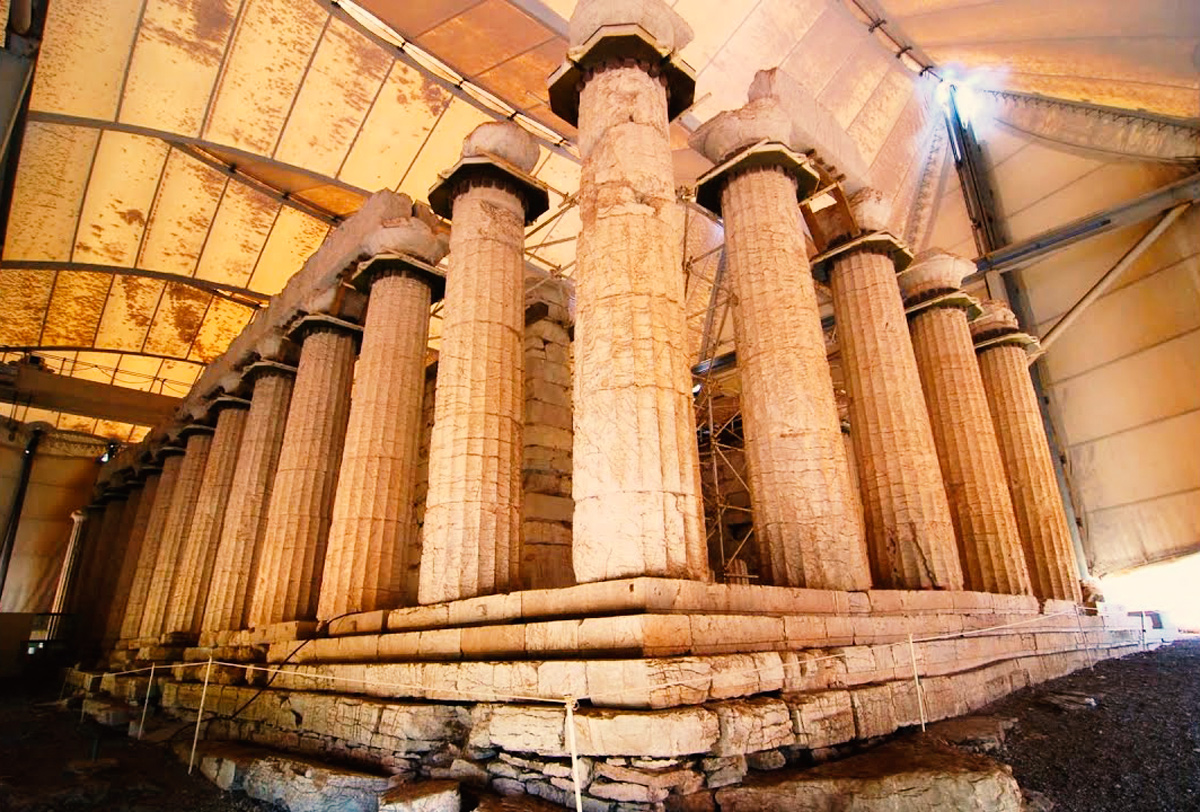On the south side of Ilia, at Vasses, in Figalia one meets the monument masterpiece of Epicurean Apollo, which has been described as equal to the Parthenon.
The temple was built by Iktinos between 430-410 BC. and remains the best surviving temple after the Temple of Hephaestus in Athens. It is under UNESCO protection as a World Heritage Site. Maintenance works are currently underway, which will take about two decades. The temple is 14 kilometers southwest of Andritsaina, at an altitude of 1130 meters. On top of Mount Kotili, an imposing and wild landscape that captivates the visitor. On the site where the temple is today, which was then called Vasses, the inhabitants of the neighboring city of Figalia had founded since the 7th century BC. sanctuary of Apollon Vassita, whom they worshiped under the surname of Epicurean – a supporter of war or sickness.
the Epicurean name, was given during the wars with the Spartans, around 650 BC. The frieze of the temple is a true masterpiece consisting of 23 marble slabs, of which the eleven west depicting centaurs fighting (Lapiths – Centaurs) and the eleven eastern, amazons fighting (Athenians – Amazons). The Central one, in the background, depicts Apollon who, with the help of Artemis, brought back justice that was disturbed for centuries, by terrible battles (Centaurs – Amazons). It is a unique monument whose vitality and expression of forms as well as the coherent plot of the scenes make it one of the best decorated monuments of antiquity.
Unfortunately, these distinctive sculptures of the frieze of Epicurean Apollon during the Turkish occupation were perceived by European archaeologists and stolen. Today most of them adorn the showcases of the British Museum and the Louvre and Munich Museum.





